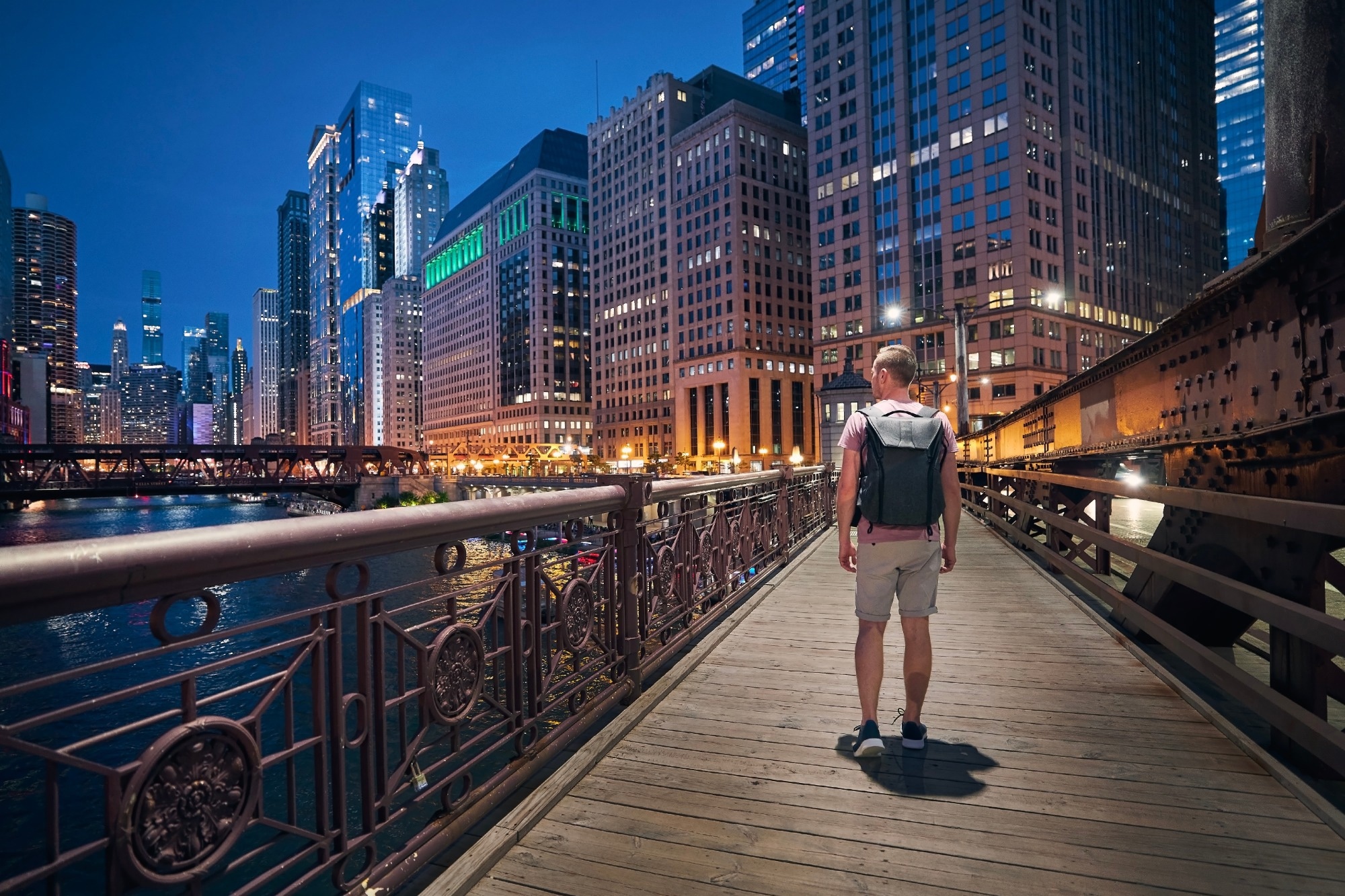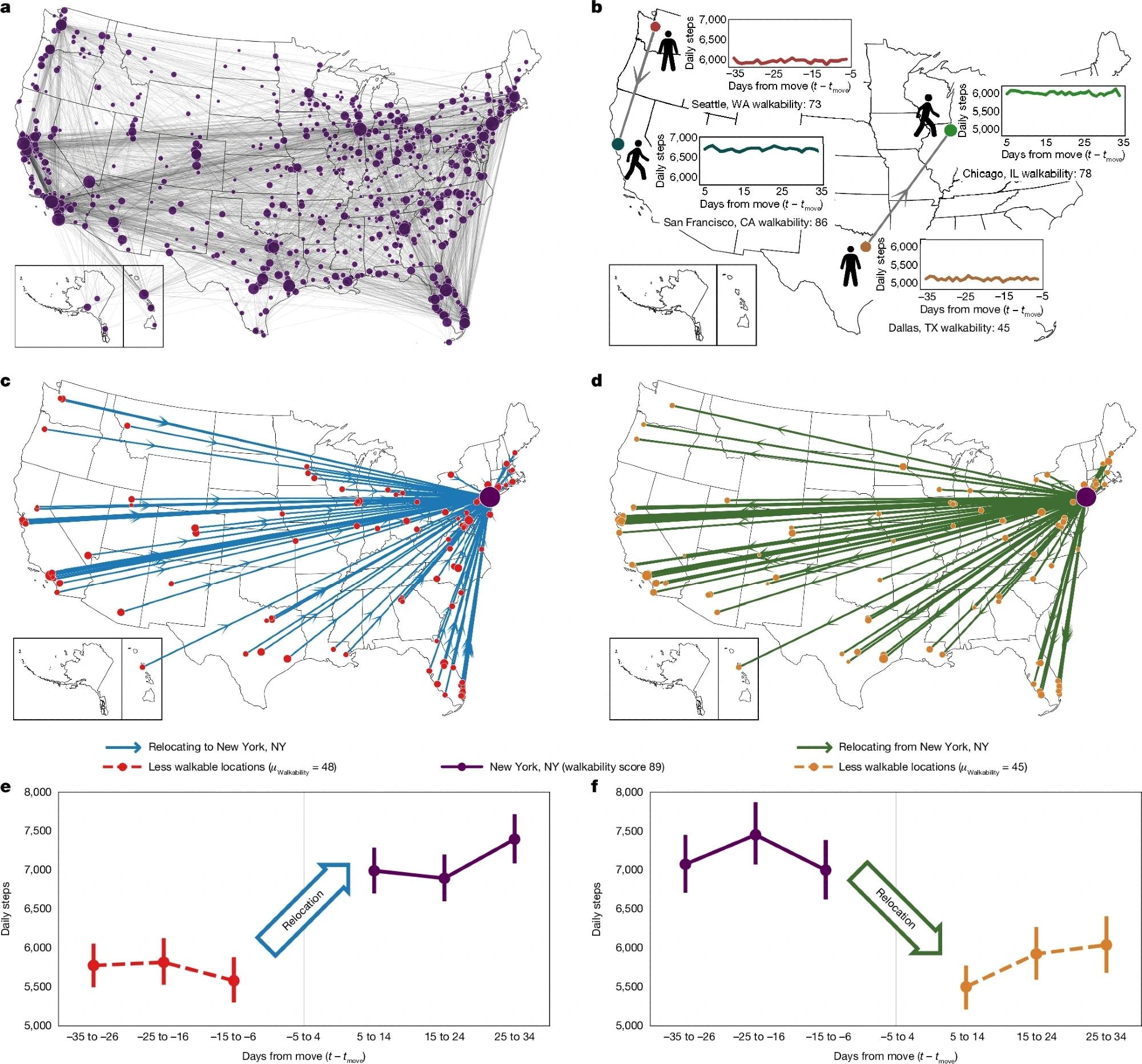A nationwide study shows that relocating to a more walkable city leads to sustained increases in daily steps and moderate-to-vigorous exercise, highlighting urban design as a powerful lever for better public health.
 Study: Countrywide natural experiment links built environment to physical activity. Image Credit: Jaromir Chalabala / Shutterstock
Study: Countrywide natural experiment links built environment to physical activity. Image Credit: Jaromir Chalabala / Shutterstock
In a recent article in the journal Nature, researchers at the University of Washington, Stanford University, and collaborators studied how changes in the walkability of built environments affect physical activity, using data from people across the United States.
They found that moving to more walkable cities increased the number of steps people walked each day; these gains lasted for at least three months and were demonstrable across most age and gender groups, although the increase was not statistically significant for women over 50 years of age.
Background
Physical inactivity is widespread globally. It contributes to major non-communicable diseases, including cancer, diabetes, and cardiovascular disease. By 2050, rapid urbanization will mean most people live in cities, so urban design will become even more important for public health.
While past research has explored links between the built environment, particularly walkability, and physical activity, findings have been inconsistent. A key uncertainty is whether higher levels of activity are driven by the environment or simply reflect personal preferences for active living.
Many prior studies have faced limitations, including small sample sizes, restricted geographic coverage, the use of self-reported information that can be biased, cross-sectional study designs that hinder causal inference, and confounding from self-selection related to choice of residence.
To overcome these challenges, researchers can now use smartphones to continuously and objectively record both location and physical activity, enabling large-scale, real-world analyses. Such data can reveal broad patterns in health behavior, urban mobility, and disease spread, and can also expose differences between device-based and self-reported physical activity measures.
About the Study
The authors used a vast smartphone-derived dataset to separate environmental effects from individual preferences, quantifying how changes in walkability influence physical activity at both population and individual levels.
The research team analyzed nearly 250,000 days of step-count data from 5,424 US users of a smartphone app (identified from a base dataset of over 2.1 million US users) who moved at least once over three years, resulting in 7,447 moves between more than 1,600 cities.
Step counts were recorded continuously via smartphone accelerometers, which have been validated for accuracy in both lab and real-world settings. Physical activity was measured for up to three months before and after each move, creating a large-scale natural experiment to assess the impact of changes in built environment walkability.
Participants represented a range of body mass index (BMI), age, and gender categories. Relocations due to short-term travel were excluded, and sensitivity tests confirmed that results were robust to different definitions of relocation. Walkability was quantified using Walk Score. The analysis included statistical tests (two-sided t-tests) and aggregated results across all relocations.
To address potential selection bias, the study compared moves to cities with similar walkability and found no significant activity changes, supporting the view that observed differences were due to environmental factors rather than personal preferences. The relationship between changes in walkability and physical activity was also point-symmetric, with decreases in walkability producing activity losses of similar magnitude to the gains from increases. The dataset also allowed subgroup analyses by age, gender, BMI, and baseline activity level.
 a, During the observation period, 5,424 participants relocated 7,447 times between 1,609 US cities. Circle area is proportional to the square root of the number of relocations to and from the city. b, The physical activity levels of participants were tracked through smartphone accelerometry over several months before and after relocation, creating a countrywide study of 7,447 quasi-experiments. c–f, Physical activity of participants moving from less walkable locations to New York City (c,e), in comparison to participants moving in the opposite direction (d,f). Activity levels change significantly immediately after relocation and are symmetric but inverted for participants moving in the opposite direction (e,f). All error bars throughout figures correspond to bootstrapped 95% confidence intervals. Credits: a–d, maps reproduced from US Census Bureau (https://www.census.gov/geographies/mapping-files/2016/geo/carto-boundary-file.html); b, walking human silhouette reproduced from Wikimedia commons under a Creative Commons CC BY 1.0 license.
a, During the observation period, 5,424 participants relocated 7,447 times between 1,609 US cities. Circle area is proportional to the square root of the number of relocations to and from the city. b, The physical activity levels of participants were tracked through smartphone accelerometry over several months before and after relocation, creating a countrywide study of 7,447 quasi-experiments. c–f, Physical activity of participants moving from less walkable locations to New York City (c,e), in comparison to participants moving in the opposite direction (d,f). Activity levels change significantly immediately after relocation and are symmetric but inverted for participants moving in the opposite direction (e,f). All error bars throughout figures correspond to bootstrapped 95% confidence intervals. Credits: a–d, maps reproduced from US Census Bureau (https://www.census.gov/geographies/mapping-files/2016/geo/carto-boundary-file.html); b, walking human silhouette reproduced from Wikimedia commons under a Creative Commons CC BY 1.0 license.
Key Findings
Relocating to more walkable cities significantly increased daily steps, while moves to less walkable areas produced equivalent decreases. For example, moving from the 25th to the 75th percentile in walkability raised activity by approximately 1,100 steps per day (about 11 extra minutes of walking), with changes sustained for at least three months.
Effects were consistent across seasons, climates, and income levels, and census data indicated most moves were for family, work, or housing, not walkability, reducing self-selection concerns.
The step increases were largely due to gains in moderate-to-vigorous physical activity (MVPA), defined in this study as activity at a cadence of at least 100 steps per minute, especially brisk walking, with large walkability improvements (49–80 point increases) adding roughly 1 hour of MVPA per week. An equivalent loss of MVPA occurred for similar decreases in walkability. This nearly doubled the proportion of participants meeting US aerobic activity guidelines (from 21.5% to 42.5%), a baseline rate that was lower than typical self-reported estimates, reflecting known discrepancies between objective and self-reported measures.
Effects were seen across age, gender, BMI, and baseline activity levels, though older women showed smaller gains and did not reach statistical significance, suggesting they may need complementary interventions.
Simulation models estimated that raising all US locations to the walkability level of Chicago/Philadelphia could result in 36 million more Americans meeting activity guidelines, while matching New York City’s level could increase this by 47 million. These simulations were adjusted for age differences between the smartphone user sample and the general US adult population.
These results highlight walkability improvements as a scalable strategy for boosting population-level physical activity.
Conclusions
The strengths of this analysis include the large, diverse dataset, longitudinal design, objective step measurement, and consistency of findings across climates, seasons, income levels, and demographic groups.
The results address common limitations in past research, such as small samples, reliance on self-reported data, and inability to control for self-selection. Evidence against residential self-selection strengthens but does not prove causal interpretation.
However, limitations of this study include potential bias toward higher socioeconomic status and health-conscious participants, restriction to US cities, and reliance on city-level walkability scores, which obscure neighbourhood-level variation and the specific urban features driving changes.
The method also misses non-step-based activities and requires participants to carry their phones for data capture. However, the growing prevalence of smartphones and wearables should reduce such biases over time.
The findings have strong policy implications, suggesting that improving walkability could substantially boost population-level physical activity, complementing individual-focused interventions.
While achieving the walkability of highly walkable cities everywhere is unrealistic, targeted changes to urban design could yield significant health benefits, particularly if combined with age- and gender-specific strategies for groups like older women, who may face additional barriers to activity.
Journal reference:
- Countrywide natural experiment links built environment to physical activity. Althoff, T., Ivanovic, B., King, A.C., Hicks, J.L., Delp, S.L., Leskovec, J. Nature (2025). DOI: 10.1038/s41586-025-09321-3, https://www.nature.com/articles/s41586-025-09321-3